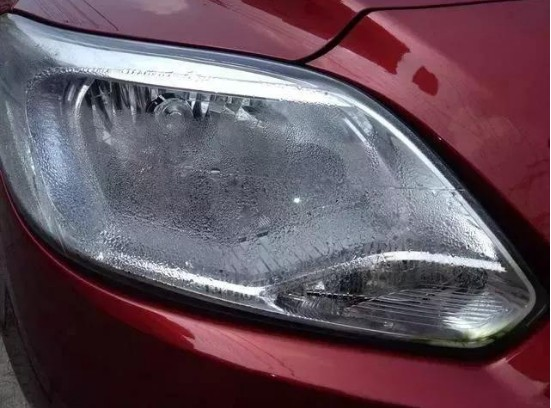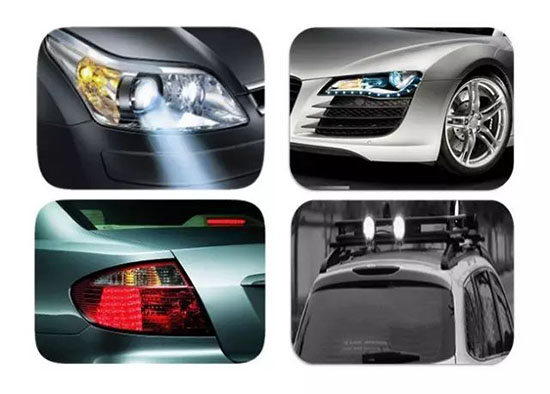In-depth analysis of automobile headlight condensation problems and solutions
2023-06-27
Background overview
The automotive lighting system refers to the system that provides lighting and signals to the car. It is an essential electrical device when the vehicle is driving at night and in bad weather. Its main purpose is to illuminate the road ahead and send out safety signals. Plays a vital role in driving safety at night and in bad weather. But with the increasing popularity of LED lighting in automotive applications, condensation problems are also increasing. Let’s first understand what is headlight condensation? Headlight condensation is water vapor that enters the interior of the headlight and condenses into water droplets due to changes in conditions. It will not only affect the aesthetics of the lights and the driver’s sight, but may also cause damage to the electronic components of the lights.

Demand analysis
- Reduce condensation on car lights: Whether the car is running or stationary, the WERS ventmembrane can operate reliably and minimize condensation. This is especially important since cars typically sit still more than 96% of the time!
- Improve design flexibility: Miniaturized housings and more compact components need to achieve more effective ventilation performance while adopting a small, thin and light design.
- Improves seal integrity: Maintains seal integrity so that lamp performance is just as reliable over time. Responsive, continuous pressure equalization prevents seal stress and helps avoid premature seal failure whether the vehicle is moving or stationary.
- Maintain performance: When there is condensation in the exterior lighting equipment of the car, the worst situation is not the fog you see on the lens, but the hidden danger caused by the condensation, which will corrode the electrical contacts and reduce the light performance and reliability of high-value electronic components, and reduce their service life.
Cause Analysis
Where does the moisture in the headlights come from? The following three major reasons have been analyzed and verified by experiments.
First, moisture is transferred through plastic surfaces such as reflectors and light distribution mirrors, mainly through adsorption, which accounts for more than 80% of the overall moisture
Invisible water molecules are adsorbed on the surfaces of reflectors, light distribution mirrors and other materials. When the lights are turned on or the outside temperature is high, the internal temperature of the car lights rises, and the surface of reflectors, light distribution mirrors and other materials increases with temperature. These water molecules are released, and with the air convection, the humidity gradually increases from the high temperature part. When the temperature of the light distribution mirror of the lamp drops sharply due to rain, visible fog will occur; when the lights are turned off or the temperature drops, Plastic headlights absorb water like a sponge. When the light source is turned on again, the temperature rises and the accumulated moisture is released from the plastic. At the same time, an increase in the dew point will cause condensation to form in the coolest parts of the headlights. The next time the light source is turned off, the temperature drops and the plastic will absorb moisture again.
Second, the water transfer through the plastic surface, mainly through the absorption of water penetration, this part accounts for a small proportion of the whole
The external water vapor has been diffused and infiltrated through the plastic for a long time, thus entering the interior of the shell.
Third, moisture transfer through the waterproof and breathable product itself can be understood as convection and diffusion, and this part accounts for a small proportion of the whole
When the car is driving, or when the engine is running or the lights are turned on to generate heat, there will be a pressure difference. If the waterproof and ventilating product selected is an open venting solution (such as a vent tube or a relatively transparent vent cap), moisture will pass through. At least 2 ventilation holes circulate to the outside of the shell. Secondly, whether the car is started or turned off, moving or stationary, water vapor diffusion occurs all the time, moving from high-concentration areas to low-concentration areas to tend to balance. Air moisture content/concentration gradient, vent performance characteristics, vent geometry, and installation geometry all affect the rate of diffusion.
How to solve the problem of condensation in car lights
- Protect the car light housing from water, insects, vehicle liquids, dust and dirt;
- Achieve continuous water vapor diffusion: whether the car is parked or driving, or when the space in the engine compartment is severely limited, it can reduce the risk of condensation and shorten the condensation removal time;
- Waterproof and breathable products are available in a variety of geometric shapes, which can meet the design requirements of specific car lights.
Solution
Vent tubes can effectively reduce condensation when the car is running through the convective effect, but they cannot ensure that the headlights are not affected by dust, dirt, sediment or water; products like vent caps can provide effective protection from foreign objects such as dirt , but it only provides a very limited diffusion effect and cannot reduce the condensation well. Faced with such a situation, Shibaide uses expanded polytetrafluoroethylene (ePTFE) materials to make adhesive automotive vents that allow air and gases to pass through freely, so that moisture can diffuse away before condensation problems arise. Because the pores of this breathable membrane are 20,000 times smaller than water droplets, it can prevent the ingress of liquids and fine dust and particles. The right balance of the two – protection from dust particles and liquids while reliably and effectively reducing condensation.

Product Features
1) Balance the pressure difference inside and outside the sensitive electronic equipment (pressure compensation);
2) Effectively reduce the fog inside the airtight casing;
3) Waterproof, breathable and dustproof;
4) It can be fixed to the surface of the electronic component housing by automatic or manual means.
Typical application
Car headlights, tail lights, fog lights, turn signals


